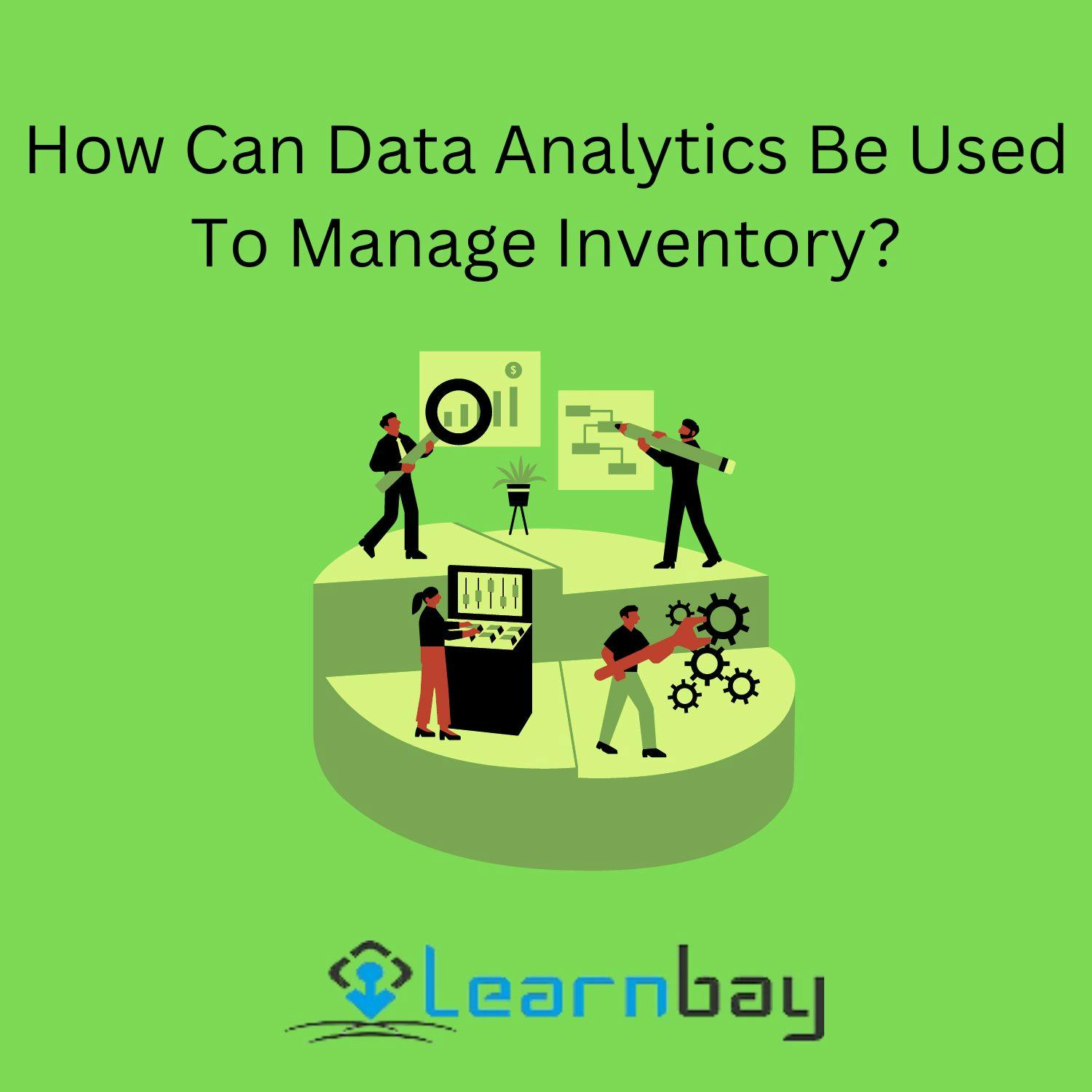How Can Data Analytics Be Used To Manage Inventory?
One of the most important aspects of running a business is inventory management. Satisfying the needs, supply, and demand of the company's materials and parts entail having the appropriate inventory, in the appropriate amount, at the appropriate place. It aids in creating the ideal balance between the company's services and inventories.
The act of separating organized and unstructured data sets into real-time, current information that might aid a company in prospering is known as data analytics.

Data analytics for inventory
An efficient inventory management tool aids in digesting a sizable amount of data from previous sales and forecasts future inventory needs while also considering your company's seasonality and lead times. Any organization formerly found it challenging to balance product availability versus projected market demand, but with data analytics, inventory management has evolved, and demand forecasting has become possible. Additionally, data analytics offers insights into customer behavior, product performance, and channel performance.
They enable all types of merchants, even those with large databases, to manage everything from stock availability to demand sales to product returns. Analytics shows and offers insights.
- The need for inventory to meet demand while keeping the necessary amount of stock
- Enhancing stock management
- Strategies to lessen the effects of product recalls
- Cross-selling makes it possible to increase the sale of less demanding items.
- These findings will get even more precise and cutting-edge as data analytics advances.
Using data science and analytics for inventory Management
By effectively managing the inventory, data analytics can assist reveal patterns and trends to enhance corporate operations.
Enhancement of operational efficiency
Operations managers can observe operations in real-time and have a deeper grasp of the metrics with the use of data analytics—this aids in eliminating all bottlenecks, enhancing the effectiveness of your sales. Compared to conventional models, big data also enables supply chains to improve performance actively.
Sales and profit maximization
In the wholesale sector, it is crucial to have real-time data access since it enables better management of sales with tight profit margins. Additionally, this ensures that the business can generate significant profits by investing in companies experiencing high demand and increased sales. By using data analytics, stocks are made so that there are always more opportunities for sales which will be explained in a data analytics course in Pune.
Increasing consumer contentment
Real-time data obtained through data analytics aids in understanding the primary driver behind the purchase of a certain product or the cause of a product's return. Making effective business judgments is facilitated by this. In order to ensure that the proper inventory level is always maintained to satisfy the needs of rising customer demand during the seasons, data can also be utilized to predict seasonal trends, spikes, or depressions in customer demand.
Reducing inventory shrinkage
Various factors might cause inventory to decrease, including theft, damaged goods, obsolescence, and inaccurate counting. These losses are avoided because of the inventory management procedure carried out with data analytics. Inventory theft in warehouses is less likely when inventory movement and the person responsible for it can be tracked. Inventory inconsistencies are found by routinely counting each component of inventory.
Cost reduction
Using data analytics for inventory management. The most expensive aspect of inventory control includes:
- Rent, labor, utilities, inventory management fees, and the cost of sending items to clients are all included in logistics and warehousing costs.
- Costs associated with material handling range from equipment purchases or leases to human resources for running numerous large machines
- Total Capital, also known as the full cost of stock purchases - The real cost of the inventory, finance charges, loan maintenance charges, and interest may all be included in this.
- Price of storage.
- Inventory depreciation, obsolete stock, shrinkage, and the effects of stockouts are risk-holding expenses.
- Cost of insurance.
Overall, data science and analytics are transforming the inventory management sector. To learn more about the cutting-edge tools and techniques, visit the data science course in Pune, accredited by IBM.